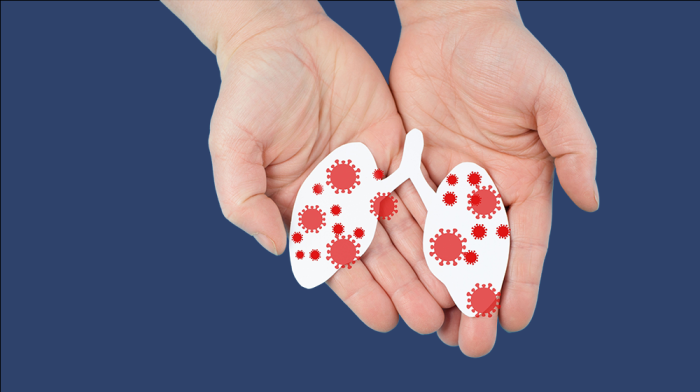
Minnesota’s earliest and most intense season of respiratory syncytial virus (RSV) infections in decades peaked in December. It’s been good news for many parents and families, but what happens now, how long does immunity from RSV last, and what risks still remain?
Beth Thielen, MD, PhD, is an adult and pediatric infectious disease doctor with University of Minnesota Physicians who specializes in researching and treating respiratory illnesses. She’s been treating patients of all ages for RSV for years, and says that while the next few months do look better, there is still risk to think about.
The current level of risk
While RSV infections have peaked, Dr. Thielen says that it is still circulating in most places, including Minnesota. There are also still viruses circulating that can cause overlapping infections with RSV, like COVID-19 and influenza.
Similar to the flu, RSV is also seasonal, “And we do still have a fair amount of our winter time yet, and we know that those are times when all these other viruses do tend to circulate,” Dr. Thielen says.
She adds that Minnesota’s typical season for RSV infections lasts all the way into March and April. “I’d prepared that even if the peak has passed, we still have cases going around, so the risk is lower, but it’s not gone.”
Dr. Thielen also wants to remind Minnesotans that if they have a cold, it’s likely infectious and to take precautions like handwashing, masking and staying home to protect others.
Immunity from RSV
With so many people in Minnesota who have had RSV so far this season, Dr. Thielen says it’s natural to wonder how long their immunity from the virus may last.
“It varies a little bit from person to person,” Dr. Thielen explains, noting that people who were infected are largely protected for the remainder of that season.
She cautions, though, that immunity does wane over time, and people are certainly susceptible to reinfection within one to two years.
“It is important to know that there are multiple strains of RSV, so there's a kind called RSV-A and a kind called RSV-B,” she says, emphasizing that people may have had one, but that they may still be more susceptible to the other.
Dr. Thielen also adds that those who are immunocompromised may have some immunity if they get an infection, but that they are likely still less protected from future infections.
The future of RSV Vaccines
“A RSV vaccine is something those of us in pediatrics have been wanting for a long time because being sick with RSV has a major impact on children and their families,” she says, which can range something as severe as hospitalization to the missed days of work those caring for children may need to take. So why hasn’t there been one already?
Dr. Thielen explains that in the 1960s, there was a potential vaccine that failed and there has not been much focus on it until now. “The important thing to know is that we understand why it didn’t work, and the new vaccines in development work differently and, in fact, are designed to avoid the issues the first one had.”
Now, there are vaccines in clinical trials that are getting closer to becoming available. In particular, Dr. Thielen is interested in research looking into how a RSV vaccine for pregnant people can protect their infant from infection after birth.
“Newborns are most susceptible to severe infection,” Dr. Thielen says, “But most infants don’t complete the primary series for most vaccines until they are at least six months old, so it’s important to find a way to protect them from the start. That could be vaccines for pregnant people who give antibodies to the baby.”
So, what’s next?
Dr. Thielen says that, especially since there is still much winter ahead, people and kids should be up to date on their vaccines for COVID-19 and the flu. “These vaccines are really safe, and even if someone thinks they’re not as at risk, they should still get protected.”
“These illnesses and potentially severe impacts are preventable, so it’s important for us to do that together.”
